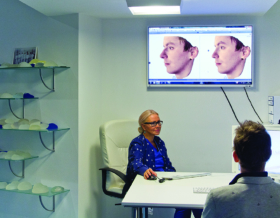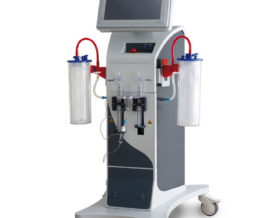 https://www.christinasclinic.ee/wp-content/uploads/kristiina-heinmets-portrait-1.jpg
2159
1500
cc
https://www.christinasclinic.ee/wp-content/uploads/Christinas-Clinic-LOGO.png
cc2025-03-07 13:36:432025-03-07 13:52:53Kristiina Heinmets: My Journey from Lipedema Diagnosis to Treatment
https://www.christinasclinic.ee/wp-content/uploads/kristiina-heinmets-portrait-1.jpg
2159
1500
cc
https://www.christinasclinic.ee/wp-content/uploads/Christinas-Clinic-LOGO.png
cc2025-03-07 13:36:432025-03-07 13:52:53Kristiina Heinmets: My Journey from Lipedema Diagnosis to TreatmentLipoedema – a fat that disappears only under the surgeon’s hand
Not all excess weight can be lost with eating vegetables and exercise. Lumps of fat on the legs and hips may be a disease that needs treatment, not laziness and carelessness as usually thought.
If you have fat on your hips, legs or arms, it may be lipoedema. Lipoedema or as colloquially said a fat swelling (lipo – fat, edema – swelling, Latin) is a chronic disease that causes abnormal accumulation of fats in the body. Although the disease was discovered at the Mayo Clinic as early as 1940, it still tends to be confused with normal weight gain.
Lipoedema – an endless vicious circle
Ignoring fat swelling does the patient a disservice because the disease tends to progress over time.
Lipoedema has three stages. The first symptoms usually appear as early as puberty, but can also occur in connection with pregnancy, menopause or other life events that cause hormonal changes. First-degree lipoedema is not usually recognized – it is thought that a person just has little thicker legs. Over time, however, lipoedema worsens and visibly uneven fat deposits form onto the legs, hips, and hands. This is where the load on the body and the risk of swelling are the greatest.
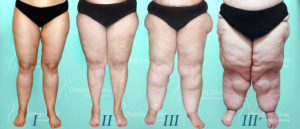
Lipoedema is chronic because, figuratively speaking, it nourishes itself. Normal fat cells have a tight fluid circulation – what comes in also goes out. However, lipoedema is caused by a disruption of cell function that results in fluid not leaving the cell and therefore causing the cell to swell. The problem creates a vicious circle, because the larger the fat cells, the more fluid they can hold.
Norlan explains that there may not be many fat cells, but they are clearly visible: “The cells have a different structure: they are large, swollen and look like bunches of grapes under the skin.” She emphasizes that lipoedema should not be confused with cellulite, which is inherently inflammation, whereas lipoedema is an uneven adipose tissue. It should also not be confused with lymphedema, where fluid accumulation and swelling are more uneven, such as on one side of the body.
If there is a disease, there is a cure
The further the disease progresses, the more difficult it is to fight it. “There is no point in waiting for it to disappear somewhere – it is an illusion. Lipoedema develops quietly over time, even when you are at a normal weight,” says Norlan.
The clinic’s surgeon, Dr. Ants Viiklepp, also explains that the faster to intervene, the better results can be achieved. He uses liposuction to remove lipoedema, but not every liposuction machine is suitable for that. It is in this disease that the complete removal of fat cells from the problematic area is extremely important, as this is the only way to prevent a new vicious circle. Dr. Viiklepp himself praises the Eva SP6 machine, which is popular among Finnish surgeons: “It washes the fat cells out from under the skin as if by pressure washing, but it does so extremely gently and thoroughly”.
As with any surgery, after a liposuction procedure, the person has a responsibility to achieve good results. The most critical time is six months after the surgery, during which the patient should carefully choose his diet. The surgeon removes the accumulated fat from the patient, but the person should still monitor the further consumption of fats.
We write more about liposuction surgery in the description of the operation.
Can you have lipoedema?
- You are a woman.
- You have accumulated fat on your lower body and hips, while your upper body is slim (except for your arms, which may also be affected).
- Fat is accumulated symmetrically on both sides of the body as in normal weight gain.
- Your close relatives have lipoedema.
Also read research articles:
Wold, LE; Hines, EA; Allen, EV (1 May 1951). “Lipedema of the legs: a syndrome characterized by fat legs and edema”. Annals of Internal Medicine. 34 (5): 1243 50. doi: 10.7326 / 0003-4819-34-5-1243. PMID 14830102.
Attention! This is a healthcare service. Christinas Clinic is licensed by the Health Board, permit L04979 (CBF Medical OÜ).

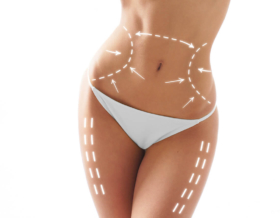
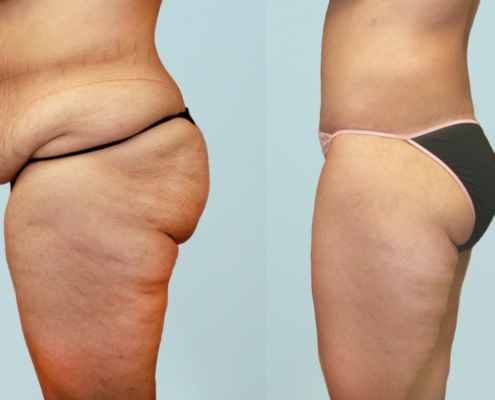
 © 2020 Christinas Clinic
© 2020 Christinas Clinic



